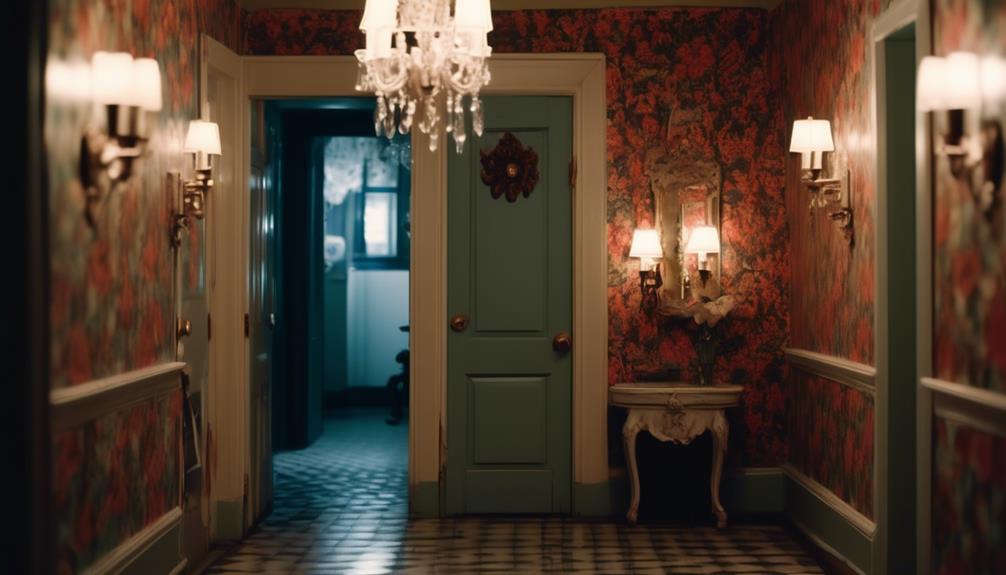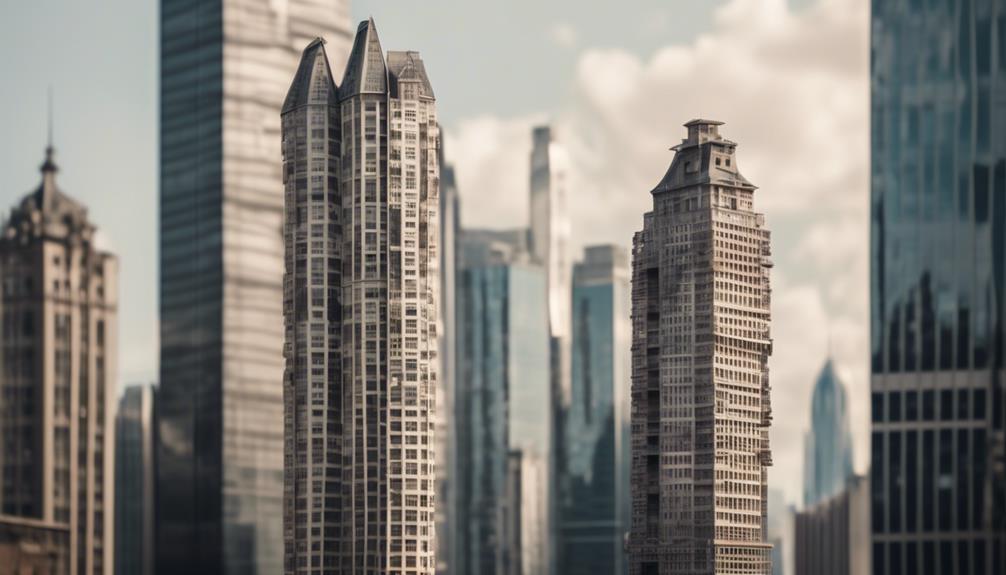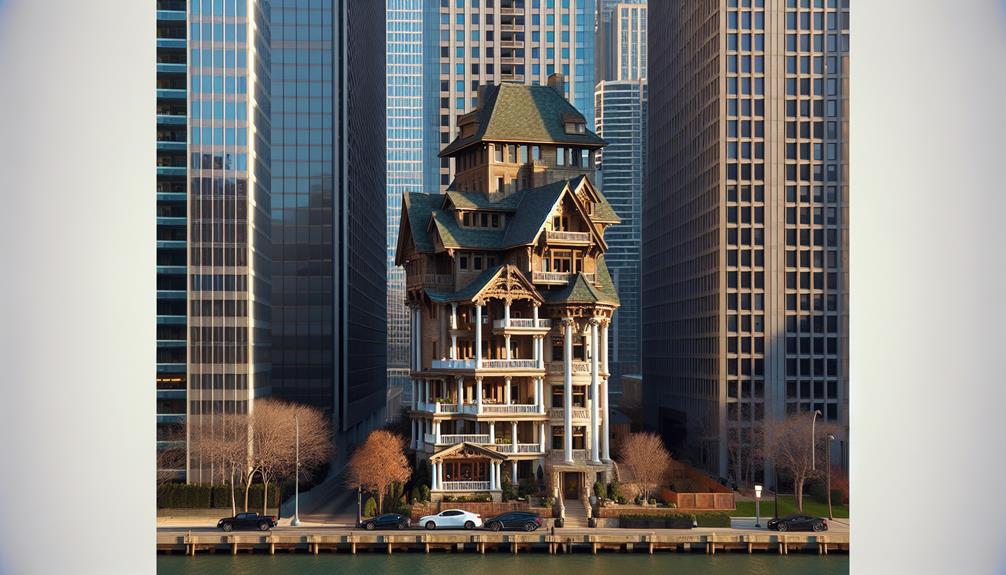Welcome to the intriguing world of spite houses, where architectural designs become tools of annoyance or acts of revenge. These peculiar structures, known for their ability to disrupt the lives of neighbors or defy local regulations, have captured the attention of both critics and tourists alike.
From their cramped origins in the 18th and 19th centuries to their presence in literature and the ongoing debate surrounding their legality, spite houses continue to fascinate and provoke discussion.
Join us as we explore the characteristics, famous examples, interior details, and the origin of the term 'spite house,' all while contemplating whether these architectural anomalies are mere annoyances or ingenious acts of revenge.
Key Takeaways
- Spite houses are unique homes intentionally built to annoy neighbors or lawmakers.
- They can range in size from 200 to 1,000 square feet and are often built in small, cramped, and abnormal spaces.
- Spite houses have a long history and have become recognizable tourist destinations in cities across the country.
- Famous examples include the Skinny House in Boston, the Alameda Spite House in California, and the Montlake Spite House in Seattle.
Characteristics of Spite Houses
Spite houses exhibit distinctive characteristics that make them stand out as architectural anomalies designed to provoke annoyance or inconvenience. These unique homes have gained recognition as tourist attractions due to their unconventional and often eye-catching designs.
Spite houses are intentionally built to block sunlight, views, or serve as architectural eyesores. They can be found in small, cramped spaces, squeezed between alleyways, or nestled on street corners. Some are even hung off the edge of another pre-existing home.
Ranging from 200 to 1,000 square feet, spite houses are typically smaller than traditional houses, but their size does not diminish their impact. Examples such as the Rockport Maine spite house, Plum Island Pink House, and Freeport New York's Miracle House showcase the diversity and ingenuity of spite house architecture.
These unique designs continue to attract tourists and onlookers, showcasing the innovative possibilities within the realm of architecture.
Famous Spite Houses
Famous spite houses have garnered attention and intrigue due to their unique architectural designs and the stories behind their construction. These houses have become recognized tourist attractions and hold historical significance.
One example is the Skinny House in Boston, Massachusetts, which was built during the Civil War to block a brother's view of the city.
Another is the Spite House in Alexandria, Virginia, considered the narrowest house in North America, built out of spite towards horse-drawn carriages damaging the owner's home.
The Alameda Spite House in California was constructed in response to the city taking part of the owner's land without permission and is now used as a rental property.
These famous spite houses continue to attract visitors who are drawn to their unique architecture and the intriguing stories behind their existence.
Interior Details of Spite Houses

The unique architectural designs of famous spite houses extend beyond their exteriors, offering captivating interior details that further contribute to their allure and historical significance. These interior details not only showcase the creativity and ingenuity of their builders but also present renovation challenges due to their unconventional layouts and limited space.
Despite these challenges, the historical significance of spite houses remains intact, as they serve as tangible reminders of past feuds and conflicts. The interior details of spite houses often include:
- Lavish kitchens and living rooms filled with natural light.
- Unique features such as sunrooms and lofted bedrooms.
- Architecturally historic elements like red wood floors and white walls.
- Open floorplans on lower levels with multiple bedrooms.
- Ornate interiors with spiral staircases, modern bathrooms, and landscaped gardens.
These interior details not only add to the visual appeal of spite houses but also provide an intriguing glimpse into their rich history and the stories behind their creation.
Spite Houses in Literature
Spite houses, with their unique architectural characteristics and historical significance, have not only left a lasting impact on real estate and urban landscapes but have also made their way into the realm of literature, captivating readers with tales of feuds, revenge, and unconventional home designs.
These intriguing structures have become a popular theme in popular culture, showcasing the creativity and resourcefulness of individuals seeking to express their frustration or enact revenge through architecture.
Spite houses in literature serve as powerful symbols of defiance and rebellion, often reflecting societal tensions and conflicts. These stories explore the psychological impact of spite houses on neighborhoods, highlighting the disruptive nature of these unconventional homes.
Origin of the Term 'Spite House

The term 'spite house' originated with the construction of The Old Spite House in Marblehead, Massachusetts in 1716, marking the beginning of a unique architectural phenomenon designed to cause annoyance or inconvenience.
The etymology of spite houses is rooted in the intention behind their construction. Here are some insights into the origin of the term and the legal implications associated with spite houses:
- The Old Spite House: Built in response to a property dispute, this house set the precedent for future constructions.
- An expression of revenge: Spite houses are a tangible manifestation of individuals seeking retribution against their neighbors or local authorities.
- Legal challenges: The construction of spite houses often raises legal questions regarding property rights, zoning regulations, and building codes.
- Historical significance: Spite houses serve as reminders of past conflicts and disputes, offering a glimpse into the social dynamics of their time.
- Balancing innovation and regulation: Spite houses challenge the boundaries of architectural creativity while prompting lawmakers to address the legal implications they present.
Understanding the etymology and legal implications of spite houses sheds light on the motivations behind these unique architectural creations and the ongoing debate surrounding their existence.
Engagement and Frequently Asked Questions (FAQs)
Engagement and Frequently Asked Questions (FAQs) surrounding spite houses often revolve around their legal implications, architectural uniqueness, and historical significance. People are curious about the historical context of spite houses and how they fit into the legal framework of building codes. To address these inquiries, here is a table that provides insights into the historical significance of spite houses and the legality of their construction:
| Question | Answer |
|---|---|
| What is the historical significance of spite houses? | Spite houses have a long history dating back to the 18th and 19th centuries. They represent a form of revenge or annoyance towards neighbors or lawmakers. These unique structures attract tourists and stand as reminders of past conflicts and disputes. |
| Are spite houses legal? | The legality of spite houses varies depending on the jurisdiction and its specific building codes. Some cities and counties have amended their housing codes to accommodate smaller and narrower homes, making it easier to construct spite houses within the boundaries of the law. |
Frequently Asked Questions
Are There Any Spite Houses That Are Currently Being Used as Commercial Properties?
Yes, there are spite houses that are currently being used as commercial properties. These unique architectural assets have the potential to create economic impact by attracting tourists and serving as attractions such as coffee shops, bars, or office buildings.
How Do Spite Houses Affect Property Values in Their Surrounding Neighborhoods?
Spite houses can have varying effects on property values in their surrounding neighborhoods. While some may argue that they decrease property values due to their unconventional and sometimes intrusive nature, others believe they can actually increase property values by adding uniqueness and character to the area. The long-term consequences of spite houses on property values ultimately depend on the specific circumstances and preferences of the local real estate market.
Are There Any Spite Houses That Have Been Converted Into Museums or Tourist Attractions?
Spite houses turned tourist attractions have seen success in converting these unique architectural annoyances into museums. The transformation of these houses into attractions showcases the innovative approach to preserving and celebrating the historical significance of these unconventional structures.
Have There Been Any Instances Where a Spite House Was Built as a Result of a Celebrity Feud or Controversy?
While there are numerous instances of spite houses being built as a result of neighborhood disputes or personal grievances, there is no documented evidence of a spite house specifically constructed as a result of a celebrity feud or controversy.
Are There Any Spite Houses That Have Been Featured in Films or Television Shows?
Spite houses in popular culture: A look at their portrayal in movies and TV shows. Spite houses as symbols of defiance: Exploring the psychological motivations behind their construction.
Conclusion
In conclusion, spite houses present a unique and controversial aspect of architecture. Their ability to annoy neighbors and defy regulations has made them notorious, yet their historical significance and unusual design have also made them popular tourist destinations.
Whether seen as architectural annoyances or acts of revenge, spite houses continue to provoke debate in the world of modern architecture. As we delve into the stories and details of these intriguing structures, we are left to ponder the intricate relationship between architecture and human emotions.

